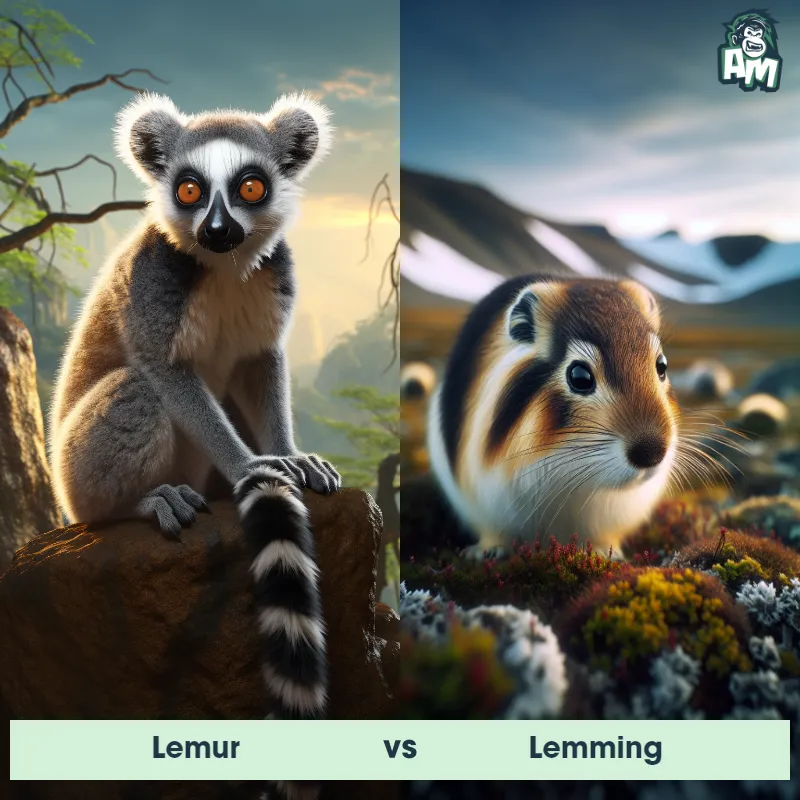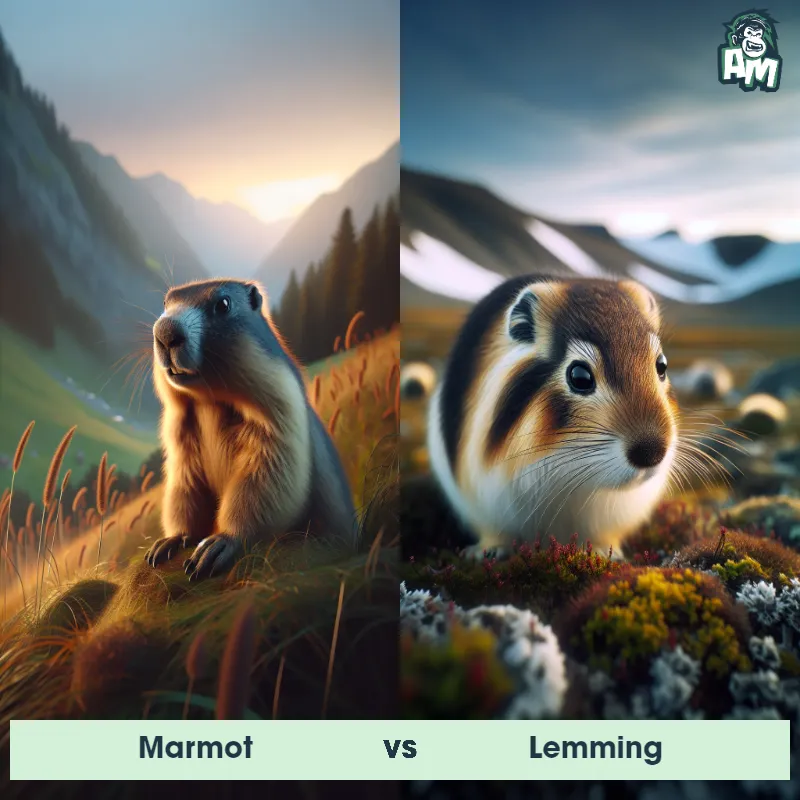The Lemming
The Lemming, also known as the Norwegian Lemming, is a small rodent found in the Arctic tundra regions of northern Europe and North America. They have a stocky body, short legs, and a short tail. The Lemming's fur is dense and ranges in color from brown to gray, providing excellent insulation against the cold. These social animals live in burrows, and their diet consists mainly of grasses, moss, and seeds. Lemmings are known for their high reproductive rates and cyclic population fluctuations.

| Lemming | |
|---|---|
| Size | 3-6 inches (7.6-15.2 cm) in length |
| Weight | 1-4 ounces (28-113 grams) |
| Speed | 5mph (8km/h) |
| Key Strength | N/A |
| Biggest Weakness | N/A |
| Scientific Name | Lemmus lemmus |
| Family | Cricetidae |
| Habitat | Tundra and alpine meadows |
| Geography | Northern regions of North America, Europe, and Asia |
| Diet | Grasses, mosses, and shrubs |
| Lifespan | 1 years - 2 years |

The Lemming
The Lemming, also known as the Norwegian Lemming, is a small rodent found in the Arctic tundra regions of northern Europe and North America. They have a stocky body, short legs, and a short tail. The Lemming's fur is dense and ranges in color from brown to gray, providing excellent insulation against the cold. These social animals live in burrows, and their diet consists mainly of grasses, moss, and seeds. Lemmings are known for their high reproductive rates and cyclic population fluctuations.
Fun Fact: Lemmings are capable of swimming long distances in order to migrate between habitats or find new areas for establishing their territories.
| Lemming | |
|---|---|
| Size | 3-6 inches (7.6-15.2 cm) in length |
| Weight | 1-4 ounces (28-113 grams) |
| Speed | 5mph (8km/h) |
| Key Strength | N/A |
| Biggest Weakness | N/A |
| Scientific Name | Lemmus lemmus |
| Family | Cricetidae |
| Habitat | Tundra and alpine meadows |
| Geography | Northern regions of North America, Europe, and Asia |
| Diet | Grasses, mosses, and shrubs |
| Lifespan | 1 years - 2 years |
Lemming Matchups
We use AI to simulate matchups between the Lemming and other animals. Our simulation considers size, strength, and natural predatory behaviors to determine the most likely outcome.
Lemming: Diet, Predators, Aggression, and Defensive Behaviors
What do Lemmings eat?
Lemmings are herbivores and primarily feed on grasses, sedges, mosses, and other plant materials. They may also consume roots, shoots, flowers, and seeds depending on the season and availability of food in their habitat.
Do Lemmings have any predators?
Yes, Lemmings have several predators in their natural habitat. Some of their main predators include various species of birds such as owls, hawks, and falcons, as well as foxes, weasels, and stoats. These predators hunt Lemmings for food, making them vulnerable to predation.
Are Lemmings aggressive?
Lemmings are not typically aggressive animals. They are known for their social behavior and tend to live in large groups. However, when threatened or during territorial disputes, Lemmings may exhibit aggressive behavior towards other individuals in their group or towards competing groups.
Do Lemmings fight?
While Lemmings are not known for engaging in physical fights frequently, they may exhibit aggressive behaviors such as chasing, vocalizations, and posturing during conflicts. These interactions often occur when defending territory or resources, establishing dominance within the group, or during mating season.
How do Lemmings defend themselves?
Lemmings rely on a few defensive strategies to protect themselves from predators or threats. One of their main defenses is camouflage, as their fur color blends in with their environment, making them less visible to predators. Additionally, Lemmings may utilize their burrowing skills to escape danger by digging tunnels or hiding in underground burrows.
What is Lemmings' biggest weakness in a fight?
One of the biggest weaknesses of Lemmings in a fight is their small size and relatively low physical strength compared to some of their predators. When faced with larger and stronger predators, Lemmings may struggle to defend themselves effectively and are more vulnerable to being overpowered in a physical confrontation.
Fun Fact: Lemmings are known for their unique behavior of mass migration, where large groups of individuals move in search of new areas for feeding or breeding, as if driven by an instinct.
Fun Fact: Contrary to popular belief, Lemmings do not deliberately commit mass suicide by jumping off cliffs. This notion was popularized by a Disney documentary in the 1950s, but it is a misconception.













